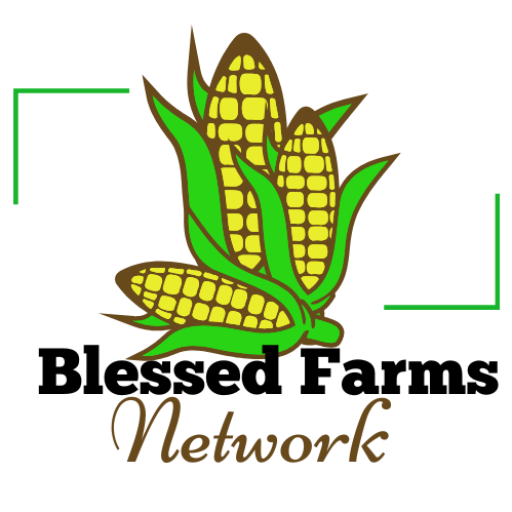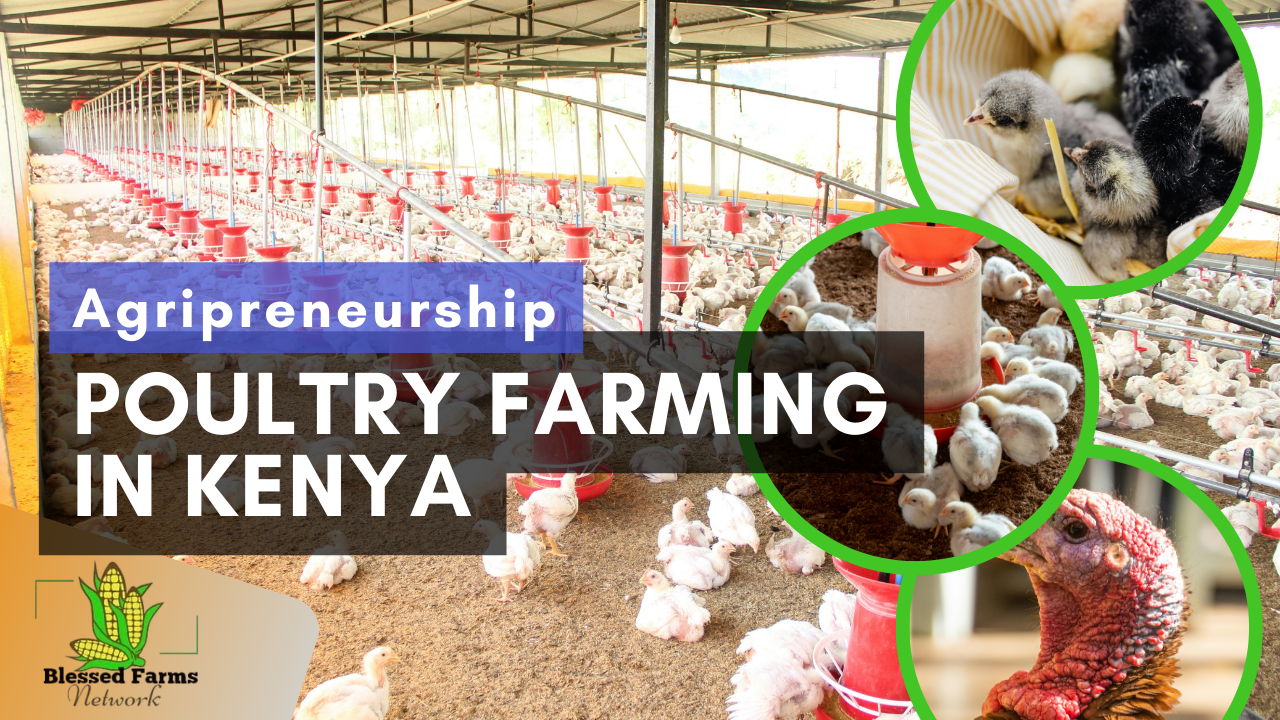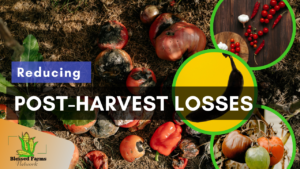Introduction
In Kenya, agriculture is considered the backbone of the economy. Poultry farming, in Kenya, as part of agriculture, is a common practice, with almost all households in the rural environment keeping poultry. Poultry farming in Kenya is defined as the farming practice of domesticating birds like chickens, turkeys, quails, ducks, or geese for their meat and eggs.
As stated, poultry farming is not a new practice among Kenyan farmers. Rather, almost all individuals who practice agriculture in Kenya, have to one level some form of poultry farming. Unfortunately, for most of these farmers, poultry is kept for home consumption, rather than as a business. It is only recently that more people, especially young farmers have entered into poultry farming as an agricultural practice.
Poultry farmers have realized its economic impact. Poultry farming in Kenya is a source of livelihood for many individuals, practiced by both small-scale and large-scale farmers. Due to this it has become a major source of employment along the whole supply chain. Further, there is an increased access to quality chicks, thus limiting the barrier to entering the industry. Small-scale farmers require little start-up capital, and can set up their production point in limited spaces and using limited resources. They can focus on supplying local demands for meat and eggs.
Other than the economic impact of poultry farming in Kenya, there is also the nutritional benefit of poultry products. Poultry meat is considered to be rich in essential nutrients and easily available. Studies have shown that white meat from chicken has high-quality protein, iron, vitamins, and fatty acid profiles. Further, unlike red meat, white meat doesn’t have a high concentration of saturated fats, rather, it has high levels of polyunsaturated and monounsaturated fatty acids like omega-3 making it appropriate for managing cholesterol.
At the same time, poultry farming requires extensive knowledge of the technology of rearing chickens to ensure that you use minimal input and get maximum gain. Unlike most domesticated animals, poultry requires a higher level of bio-security as they are more prone to diseases. Further, over the years the cost of production has gone higher due to the cost of feeds. This article is a beginner’s guide for anyone seeking to start poultry farming as an agripreneur. This is the first of a series of articles on poultry farming, whereby we start by introducing poultry farming. This information is necessary to any farmer as it will help them make vital decisions before they start.
The article will discuss the different types of poultry birds, though the focus will be on chicken. It will cover the different farming methods and systems, the appropriate housing and infrastructure for poultry farming, feeding and nutrition, health management and disease prevention, and business aspects of poultry farming in Kenya. The information will help you decide which bird to keep, the accompanying cost, and the potential financial outcome.
Types of Birds for Poultry Farming in Kenya
Poultry farming in Kenya involves the domestication of birds like chickens, ducks, turkeys, and geese for meat and eggs. In Kenya, Chicken is the most commonly domesticated bird due to its high demand, and quality produce. There are various breeds of chicken that are kept in Kenya. They include:
1. Broilers
These are fast-growing chickens that are specifically kept for their meat. From hatching, they are usually ready for market within 5-7 weeks. Their growing time is based on the quality of feeds, and care. This chicken breed is very vulnerable to diseases, and thus extreme care must be taken to ensure the market weight is reached on time.

2. Layers
This chicken breed is kept for egg production. They have the capability to produce a steady supply of eggs for 1- 2 years. Unlike broilers that require approximately 6 weeks, layers require a long-term commitment. At the same time, they provide the farmer with a consistent source of income through the daily egg production.
3. Indigenous Breeds
These are local breeds that are more suited to the local climate of Kenya. As such, these breeds are the most commonly kept breed of chicken. They include pure kienyeji, or kienyeji improved, among other breeds that have emerged over the years. Unlike broilers and layers, these indigenous breeds are slow to mature. Their meat is considered to be of a higher quality and eggs are more expensive as they are the most preferred by the consumers within Kenya.
Farmers also keep other poultry species like:
- Ducks which are valued for their unique tasting meat and eggs. Their popularity has not yet grown in Kenya.
- Turkeys
- Quails
- Guinea fowls
- Geese
An extensive study of each poultry species has been done on individual articles, whereby the specific needs for the species are specified. It is necessary to understand the unique advantages and challenges and the market demands that come with each chicken breed prior to choosing which one to keep.
Methods and Systems of Poultry Farming in Kenya
With the advancements in technology, there have been numerous changes to the methods and systems that poultry farmers use to keep their poultry. Poultry agripreneurs strive to develop effective systems that avoids crowding, while ensuring a controlled environment for effective feeding, egg gathering for indigenous and layer chicken, and cleaning operations. The level of technicality varies from one system to another. Selecting the appropriate system depends on the breed, the accompanying costs and level of mechanization.
Free-range system
This is the most commonly used system of poultry farming in Kenya. It involves allowing the birds to roam freely outdoors to forage on grasses, insects and other natural feeds. This system is based on the natural behavior of birds, thus allowed to roam outdoors are seek their own food. These birds’ meat and eggs usually have a unique flavor and profile.
As the birds seek out their food, or eat left over foods, the cost of feeds for farmers is greatly reduced. As these animals are not caged, they are usually healthier and less stressed. Unfortunately, these birds are more prone to diseases, and predators. They also need enough space.
Battery Cage System
With the introduction of breeds that are more prone to diseases, introduction of battery cage system is considered quite effective. This system is usually used for commercial layers, where birds are kept in individual cages. This system maximizes spaces and makes the process of egg collection more efficient it further offers a more efficient method for controlling feeds and water systems. These systems are considered to increase the level of productivity, lowers mortality, improves culling, while minimizing wastage, cannibalism, spread of disease and parasites and reduces labor and space requirement. At the same time, setting up battery cage systems is quite high and this can prevent small-scale farmers from installing them.

Deep Litter System
After free-range system, this is the next most used system for poultry keeping. The birds are raised on floor covered with bedding materials like wood shavings, rice husks, or straw. The litter is necessary to absorb moisture and manure from bird dropping, thus reducing ammonia levels and promote bird health. This system is effective for broilers and layers, whereby the birds are allowed to exhibit natural behaviors such as scratching and dust bathing, without exposing them to predators and diseases.
When using this system, farmers need to regularly clean and replace the litter to prevent ammonia level
Semi-intensive System
A combination of the deep-litter and free-range system. The birds have access to in-door shelters and outdoor runs. This system aims to reduce the negative impacts of free-range systems like indoor providing protection against harsh weather and predators.
The system a farmer selects depends on the resources available, farm size and bird type. They should consider the cost, labor availability and ethical consideration. An example, a commercial poultry farmer should use battery cages to increase their efficiency, and ensure that they keep a large flock with maximum output.
Housing and Infrastructure for Poultry Farming in Kenya
Based on the type of farming system, it is necessary to build and have necessary infrastructure to ensure successful poultry farming in Kenya. An effective housing system ensures high productivity in a controlled and safe environment.
Types of Poultry Houses
There are three types of poultry houses that a farmer can build.
1. Open-Sided Poultry Houses
a solid foundation is built at the bottom, though the upper section has a mesh wall that allows for natural ventilation. The mesh also prevents the entry of predators and rodents. It is suitable for free-range and semi-intensive farming systems.
2. Closed Poultry Houses
this housing system is fully closed to ensure better control of temperature and light. These houses are fully enclosed and use fans, air conditioners, heaters and other equipment to maintain the right conditions.

3. Mobile Poultry Houses
this is a housing system that is used for free-range system, where the birds are allowed to forage a specific area, and moved to a fresh area to reduce parasite build-up.

Key Requirements in Housing for Poultry Farming in Kenya
Three key requirements need to be kept at bay at all times: ventilation, lighting and temperature.
Adequate ventilation is necessary to ensure effective airflow, the removal of excess moisture, and control of ammonia buildup due to manure. The lack of adequate ventilation could lead to respiratory issues and reduced growth rates.
Lighting requirements are necessary as they regulate birds’ biological rhythms. Light requirements are especially important for layers, where exposure to light determines the rate of egg production. The other bird breeds have minimal light requirements, with broilers requiring 24-hour lighting to enforce continuous feeding even at night. For layers, the lighting period varies from one stage of development to the next.
Temperature requirements are equally vital. For young chicks, to mature birds, the temperature and humidity requirements vary. It is necessary to ensure that the temperatures are not too hot or cold as this can increase stress and reduce productivity.
Other than these requirements, biosecurity measures need to be put into place to prevent disease outbreaks and the entry of predators and rodents. Some biosecurity measures include: –
- Structural designs that have designated entryways with footbaths to disinfect shows.
- There should be limited visitor access to prevent disease transmission
- Cleanliness of the poultry house, and the feeding and water stations is a requirement. The feeding and water stations should also be elevated to avoid contamination through droppings.
- Pest control should also be done to prevent rodents, insects, and other disease carriers from entering the housing system.
- Sick birds should be isolated immediately.
Feeds and Water Requirements
Other requirements are feeds and water.
Proper feeding and nutrition are essential for poultry health, growth, and productivity. Each breed has a unique dietary need that supports its growth at the specific stage as per the production goal. In most cases, there are starter, grower, and finisher feeds, specific to the type of bird. These feed formulations have different content of proteins, vitamins, and requirements depending on the stage of growth. Farmers should ensure they give their birds quality feeds that are well-equipped with the right nutritional needs.
There are alternative or complementary feeds that farmers can use like Azolla, Black soldier flies, and crickets, that can be included as alternative sources of pure protein and calcium. Farmers can also aim to use locally available material to constitute their own feed.
Further, birds should have unrestricted access to clean water. Water is instrumental to digestion, temperature regulation, and general health. Birds should have unrestricted access to water, especially during the hot seasons. Water can have supplements like calcium, proteins, and vitamins to help specific nutritional needs.
Health Management and Disease Prevention for Poultry Farming in Kenya
The lack of proper health and disease management can cause huge losses to poultry farmers. Due to their close proximity, diseases can kill whole flocks if not well managed. Further, early prevention should be done through vaccination, among other biosecurity measures.
Common Poultry Diseases
- Newcastle Disease is a highly contagious viral disease that affects the respiratory, nervous, and digestive systems of poultry. Symptoms include sneezing, coughing, and paralysis. Newcastle disease can spread quickly, causing high mortality rates, especially among unvaccinated flocks.
- Fowlpox is another viral infection that affects chickens, causing lesions on the skin and mouth. It spreads through direct contact or by mosquitoes. Though not usually fatal, fowlpox can significantly reduce productivity in infected birds.
- Avian Influenza, also known as bird flu, is a potentially severe viral infection that can spread rapidly, affecting multiple organs. Symptoms include respiratory distress, swollen heads, and sudden death. It poses a serious risk not only to poultry but also to human health.
- Coccidiosis is a parasitic disease caused by protozoa, affecting the digestive tract. It is especially common in young birds and spreads through contaminated litter, causing symptoms like bloody droppings, weight loss, and reduced feed intake. Without timely treatment, coccidiosis can lead to high mortality rates.
Farmers should have regular checks on the flock to identify sick birds. Healthy birds are usually alert, active, and with good appetite as compared to sickly birds that are lethargy, with drooping wings, poor appetite and unusual droppings. They might have difficulty breathing, or with swollen eyes based on the disease. Sick birds should be isolated immediately, and treated as per the advice of a veterinarian.
Conclusion
In conclusion, successful poultry farming in Kenya demands an understanding of different bird breeds and the systems that best suit them. From managing nutrition and health to selecting appropriate housing and farming methods, each decision directly impacts productivity. By grasping the specific needs of each bird type—whether it’s broilers, layers, or indigenous breeds—farmers can maximize returns and maintain a healthy flock. For more detailed insights on specific poultry species, feel free to explore the articles dedicated to each bird type. These resources provide in-depth guidance on optimizing poultry farming practices for a profitable venture.





